You see a lot of weird stuff at Eurobike, but it’s not always elaborate. Unike this, which caught our eye on the last day of Eurobike. You see, this is a virtual reality bike ride, filmed from the chest of a rider during a race, and controlled by you, on a static bicycle. It’s made by Italian digital agency Tinbob.
How It Works:
Here’s the setup:
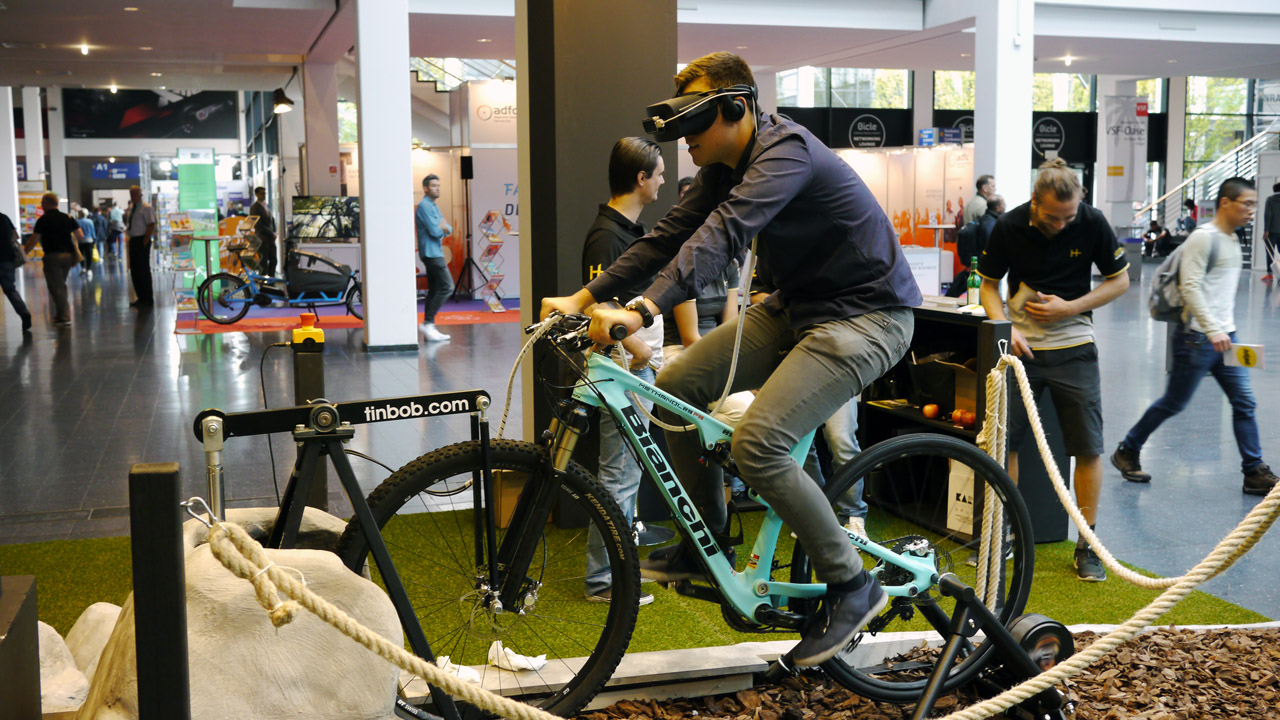
The bike is mounted in a turbo trainer, which has computer controlled variable resistance. At the front of the bike, a linkage connects the front axle to a lever with a linear actuator on the other end, allowing it to lift and drop the bike, complete with rider weight too. The front wheel and fork can’t turn, but the stem is running slightly loose so the handlebars can turn. An Oculus VR headset sits on top of all that like a cherry, with a leap motion controller stuck to the front of it so that it can sense your hands. In front of all that, there’s a fan that blows harder depending on how fast you’re virtually moving.
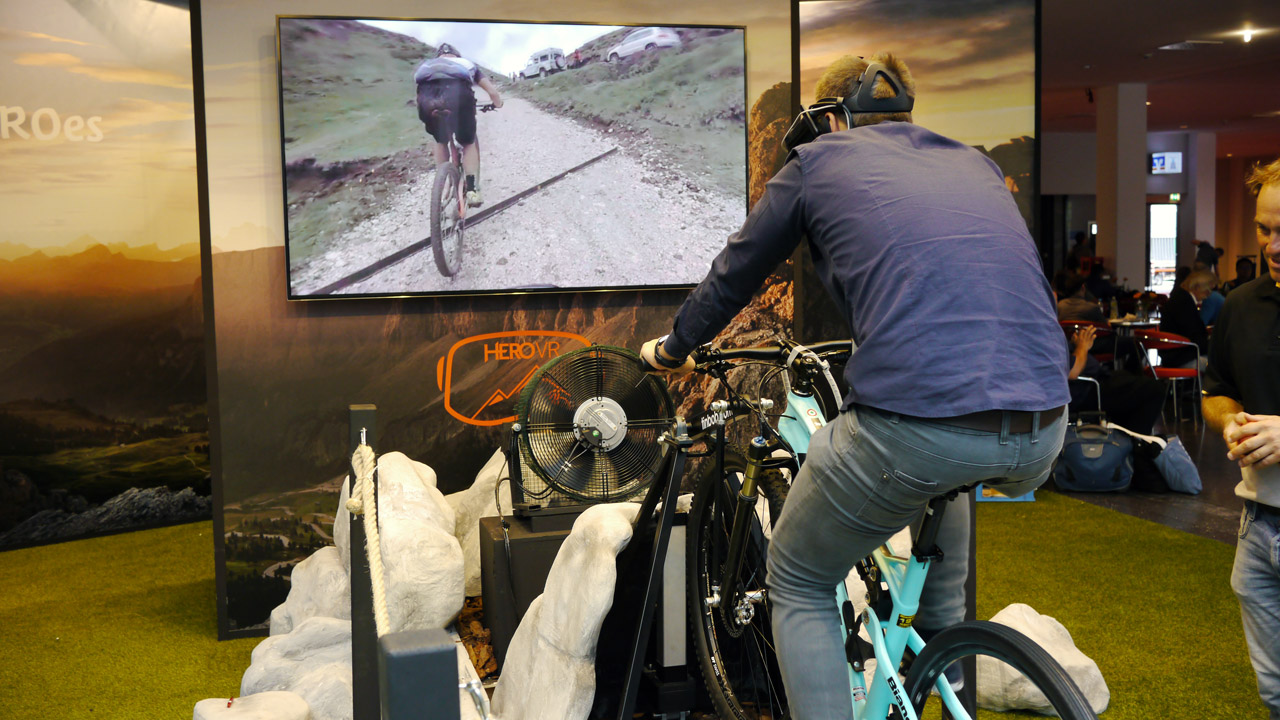
You get on the bike, someone pops the VR headset on your noggin (it’s an Oculus headset, those of you who are curious), and you see a menu in front of you. The Leap Motion on the front allows you to jab at menu options by waving your arm into them.
There are a selection of races you can play through, and the person running it pointed out which were more difficult. Once you pick, suddenly you’re in a pack of racers on a starting grid, and you can look all around you within the 360º video. Look down, and you can see handlebars with someone else’s hands on them.
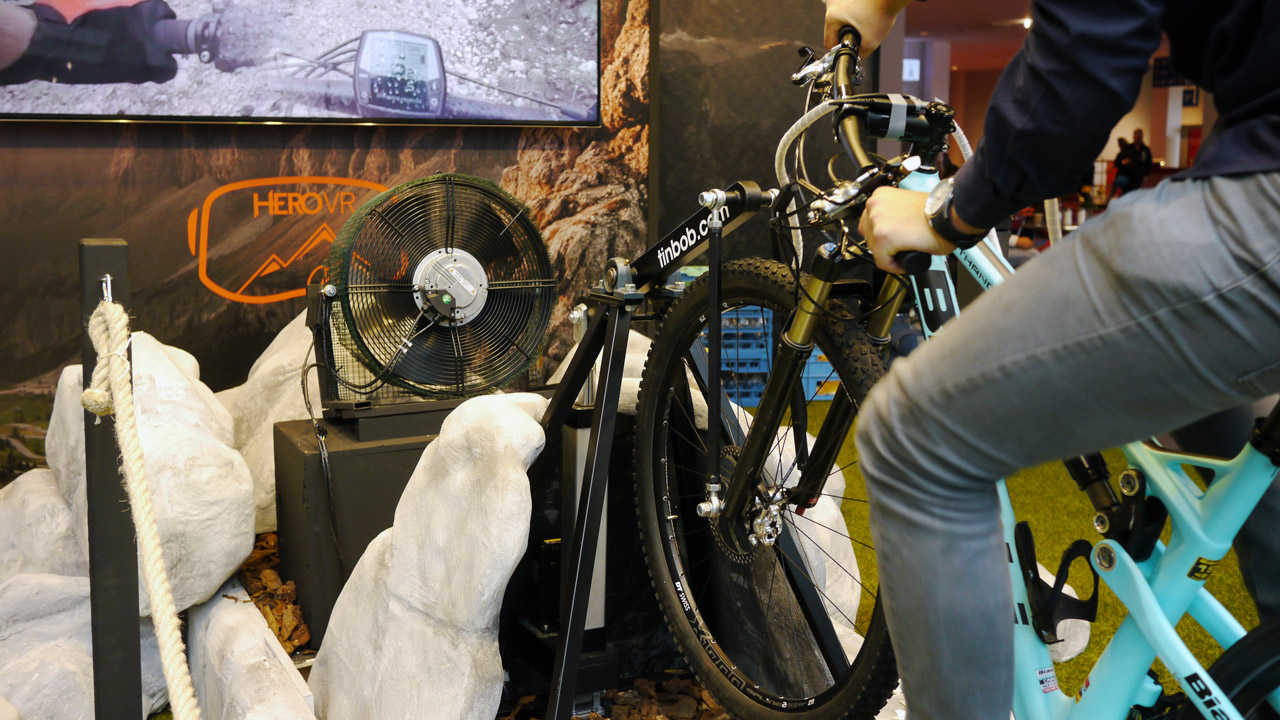
What It Felt Like:
So how well does it work? Here where we veer emphatically from news into opinion; this was my experience of Hero VR.
Because it’s running off a video rather than a simulated 3D world, it has some inherent limitations. It’s a 360º video, and with the head tracking in the headset, you can look all the way around and behind you. That’s responsive and has no lag, so feels comfortable and fairly natural. It appears to have been filmed from chest height though, so you do sometimes see giant ghost biceps fading out to your left and right, making it kind of feel like you’re a tiny person in a papoose worn by a pro rider. That’s until you look forwards again, and the bars feel like they’re a natural length away from you.
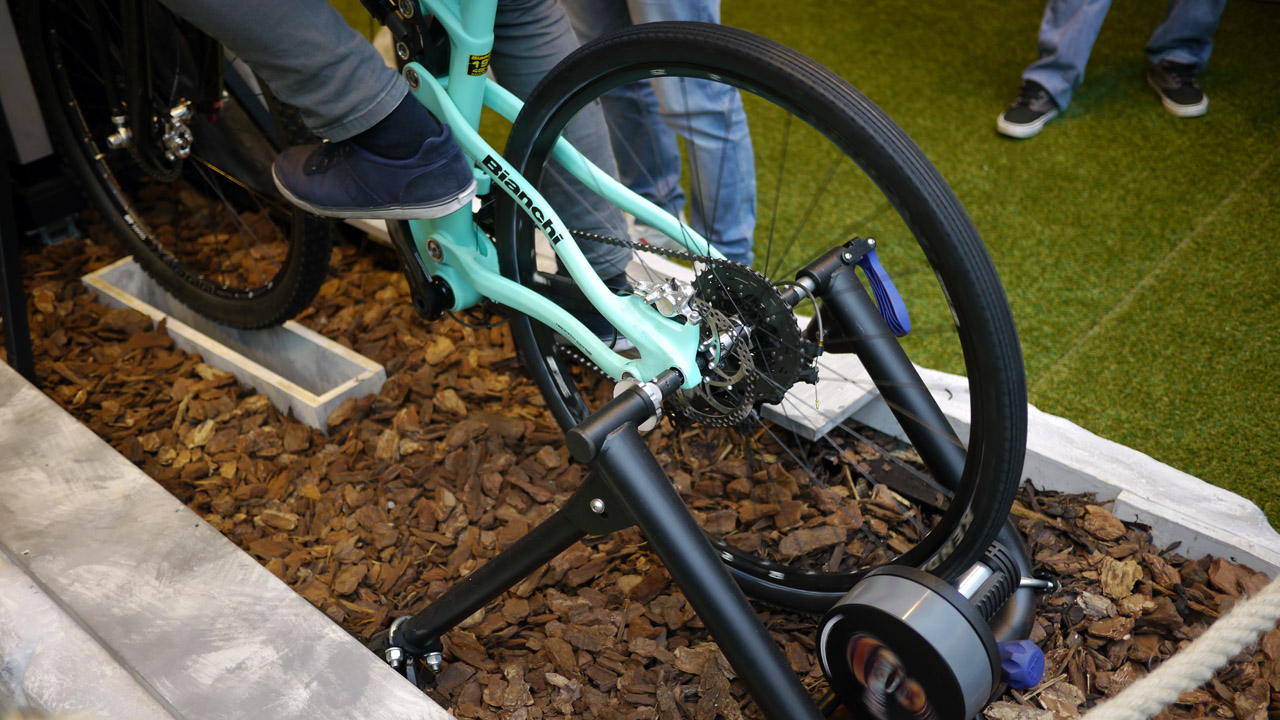
The response to steering and pedal input feels a little vague. I’d have to play it a lot more to be sure, but it seemed at points like it might be doing some kind of clever video interpolation as you move side to side, but it was a bit jerky. Without playing it repeatedly, I also can’t be sure how stuck on rails it is, or how much if any it was responding to my inputs. If you play videogames you might not be impressed, especially if you’re one of the purists who insist on the highest resolution possible, next to no input lag and a minimum of sixty frames per second.
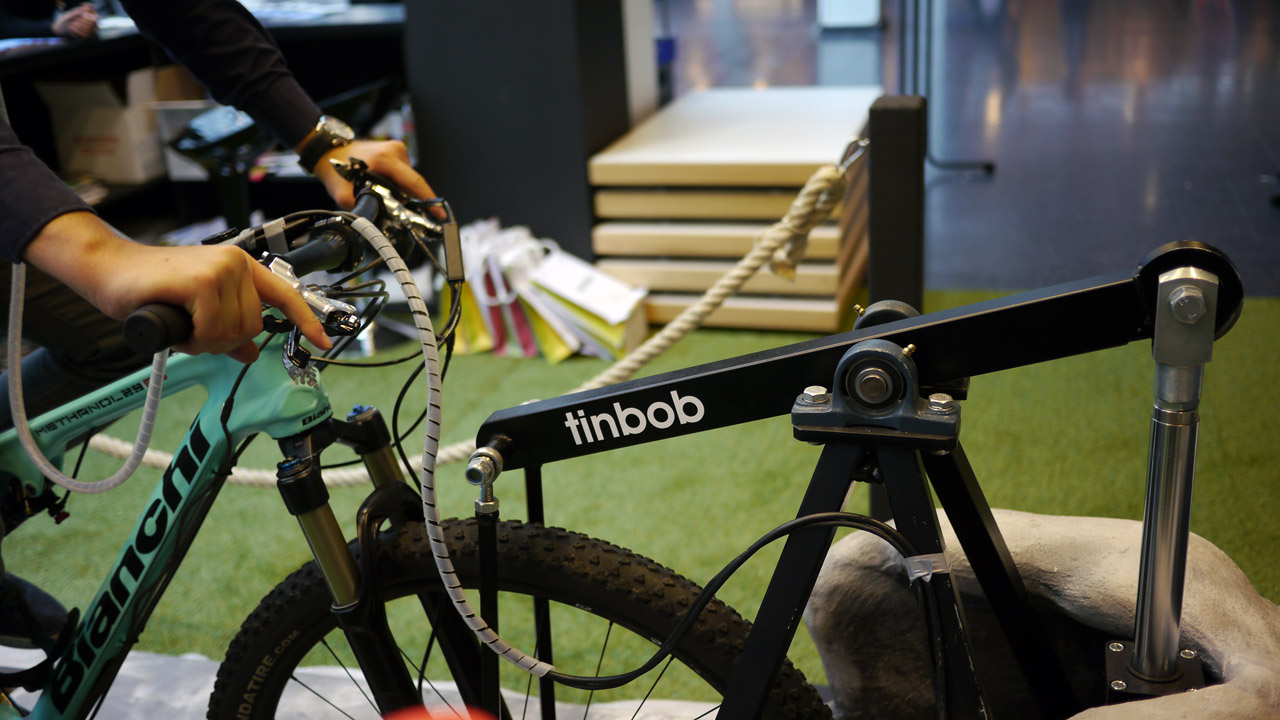
Ultimately, I’m doing an unfair comparison to riding a real bike. There’s a lot missing; you don’t feel the back tyre bite and crunch into the trail surface, and while the fork actuation gives you up and down input, doing an okay job of simulating choppy trail surfaces, it doesn’t flex in the same way you’re used to feeling it on a non-static bike. You’re not dealing with any gyroscopic force from the wheels and you can’t lean the bike. My riding instincts didn’t quite match up to what was possible in the simulation either – I was plunging into corners, automatically trying to lean, and as a result generally hanging off it as the video played the bike going round a corner.

At the end I was hot, sweaty, out of breath, and had used some slightly different muscles to the ones you’d normally exercise by riding a bike. It was an interesting thing to play with, but I think it has a way to go. Much like last time round.
VR was belle of the technological ball for a short period in the 90’s, until everyone realised that the first generation of hardware was incredibly janky and basic. It had been hyped to infinity thanks to films like Lawnmower Man, and delivered on very little of that cyberspace promise.
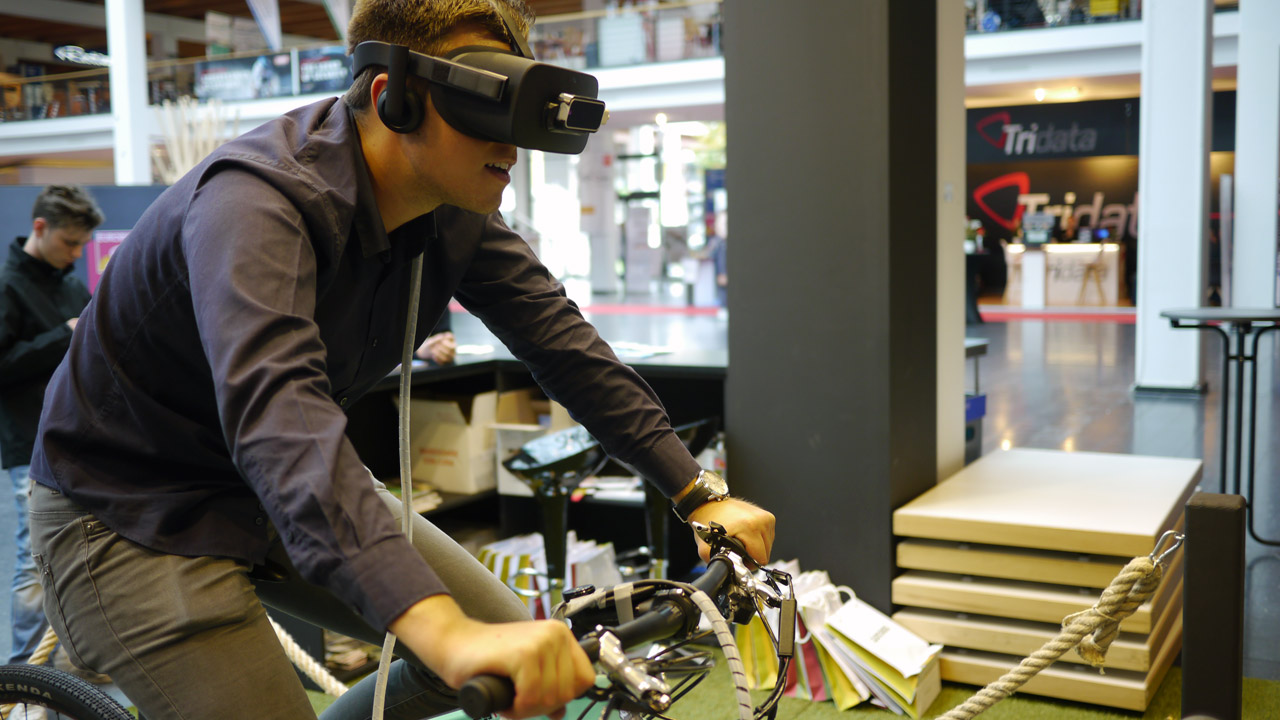
Fast forward 20 years and VR has enjoyed something of a resurgence, though seems to still be struggling to fulfil its extravagant promise, and is struggling for traction with consumers who generally don’t have a spare room for this sort of thing. In the middle of all the hype, Valve, co-developers of the Vive with HTC, seem to be the only company that have had anything sensible to say about it: “We’re comfortable with the idea that VR will turn out to be a complete failure”.
The technology is much better than it was a few decades ago though. As well as cheap headsets you can shove your smartphone into, the HTC Vive can can track your position and orientation in a room to within a millimetre, and current Oculus headsets have very intuitive feeling controllers that track your hands with precision. Current high end PC hardware can belt out very high frame rates to multiple displays, helping to prevent motion sickness, and a new generation of VR developers have learned lessons first learned in the 90’s – such as, if you don’t have something to centre your vision on, such as a crosshair, some handlebars or (as in everyday life) your nose, the axes of your head and vision can slowly drift apart and make you feel sick.
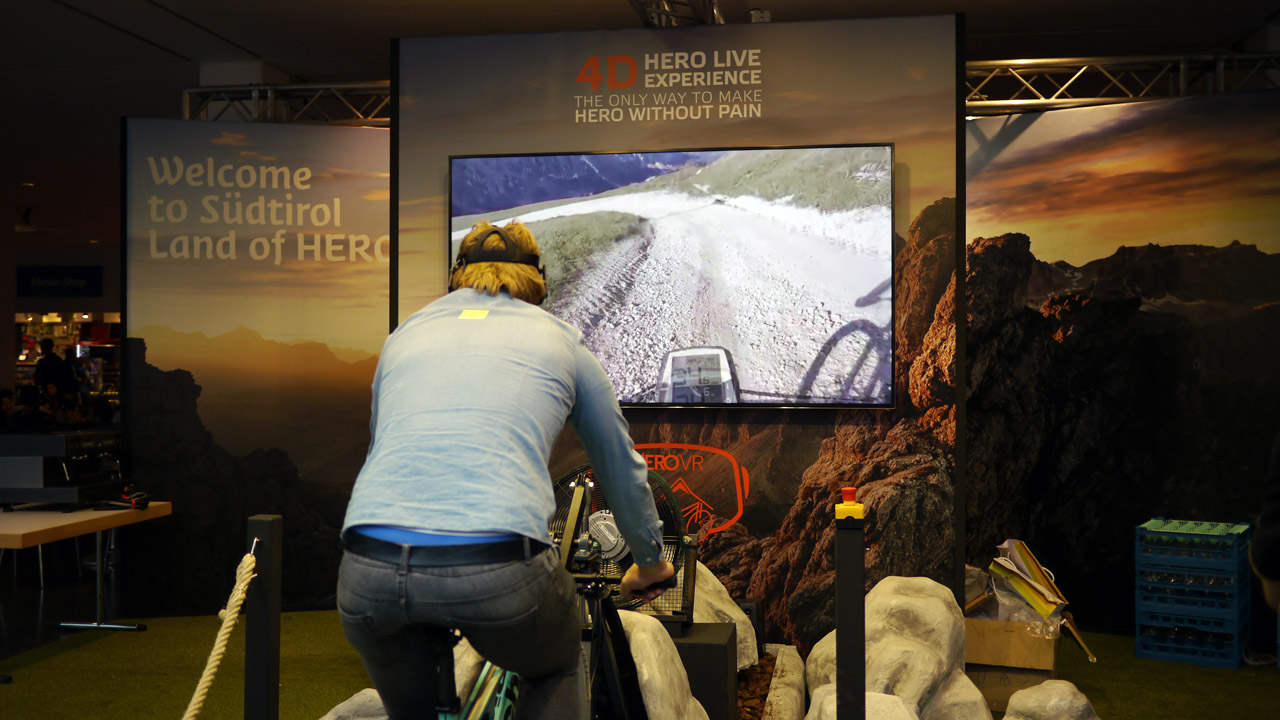
At home, I think this kind of thing could definitely make turbo sessions a bit more interesting, just like Zwift and its ilk, but why not use it to simulate fantastic environments rather than trails I could find and ride? Where a lot of VR technology seems to be settling is in “experiences” for stands at trade shows and other events, with agencies like Tinbob, developers of this particular VR experience, jumping right on that wagon. Ultimately, I’ll be sticking to real bikes and trails for now though.
Don’t forget to check out all our coverage from Eurobike on the tag STWEB17.
Comments (1)
Comments Closed

Something even worse than E-Bikes…..